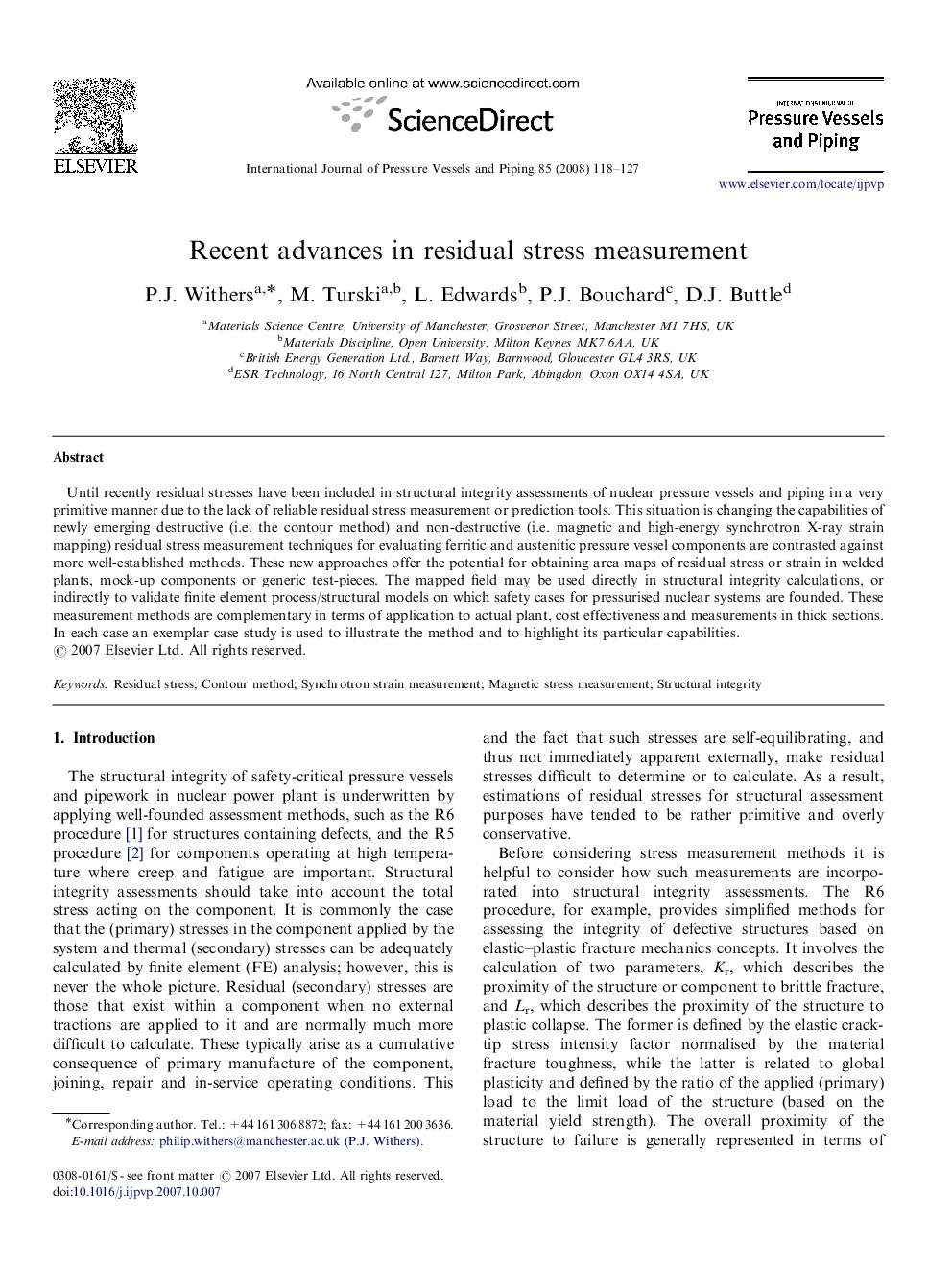| Article ID | Journal | Published Year | Pages | File Type |
|---|---|---|---|---|
| 788584 | International Journal of Pressure Vessels and Piping | 2008 | 10 Pages |
Until recently residual stresses have been included in structural integrity assessments of nuclear pressure vessels and piping in a very primitive manner due to the lack of reliable residual stress measurement or prediction tools. This situation is changing the capabilities of newly emerging destructive (i.e. the contour method) and non-destructive (i.e. magnetic and high-energy synchrotron X-ray strain mapping) residual stress measurement techniques for evaluating ferritic and austenitic pressure vessel components are contrasted against more well-established methods. These new approaches offer the potential for obtaining area maps of residual stress or strain in welded plants, mock-up components or generic test-pieces. The mapped field may be used directly in structural integrity calculations, or indirectly to validate finite element process/structural models on which safety cases for pressurised nuclear systems are founded. These measurement methods are complementary in terms of application to actual plant, cost effectiveness and measurements in thick sections. In each case an exemplar case study is used to illustrate the method and to highlight its particular capabilities.
